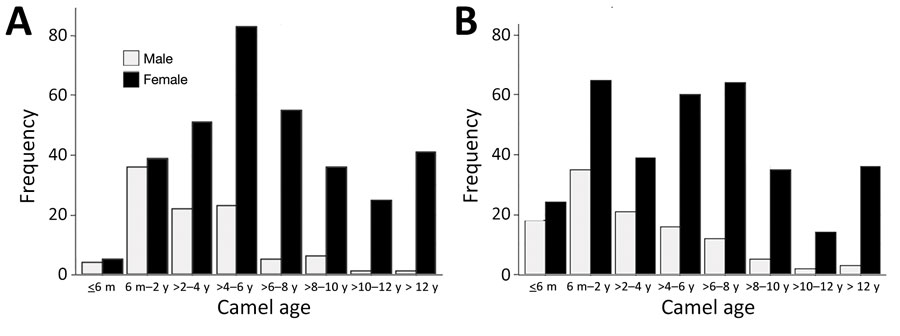Volume 27, Number 9—September 2021
Research
Risk Factors for Middle East Respiratory Syndrome Coronavirus Infection among Camel Populations, Southern Jordan, 2014–2018
Figure 2

Figure 2. Frequency distribution of camels sampled for Middle East respiratory syndrome coronavirus in southern Jordan, February 2014–December 2015 and October 2017–October 2018, stratified by age. A) 2014–2015 study; B) 2017–2018 study.
Page created: June 22, 2021
Page updated: August 17, 2021
Page reviewed: August 17, 2021
The conclusions, findings, and opinions expressed by authors contributing to this journal do not necessarily reflect the official position of the U.S. Department of Health and Human Services, the Public Health Service, the Centers for Disease Control and Prevention, or the authors' affiliated institutions. Use of trade names is for identification only and does not imply endorsement by any of the groups named above.